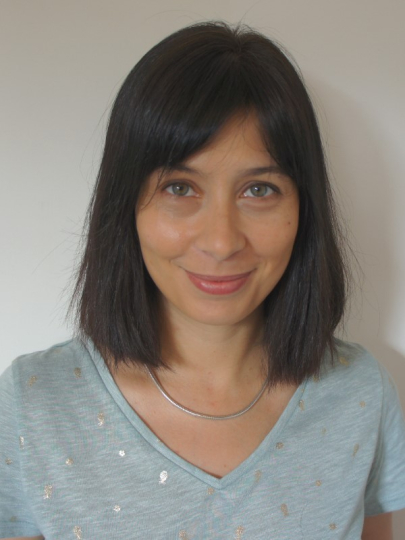Laura PicasInstitut de recherche en infectiologie de Montpellier (IRIM) - (CNRS/ Université de Montpellier)
Mes recherches
My research activity is based on combining quantitative cell biology and biophysics approaches to understand the spatio-temporal organization of cellular membranes during endocytosis in physiology and disease. Formerly trained in biophysics, I have been working on Atomic Force Microscopy (AFM) and on different types of fluorescence microscopy applied to in vitro and cellular membranes since 2006. After a thesis at the University of Barcelona (2006-2010), in 2010 I performed a first postdoctoral stay at the laboratory of Simon Scheuring (Inserm, U1006, Marseille), which is a leader in the field of AFM. In 2012 I decided to cross-disciplines and perform a second postdoc in cell biology. I had a great opportunity joining the laboratory headed by Bruno Goud (Institut Curie, Paris), which is a renewed lab in membrane trafficking. I was recruited as CR2 CNRS at the CBS in Montpellier and thanks to the support of the ATIP-Avenir program, in 2017 I started up my team at the Institute de Recherche in Infectiologie de Montpellier (IRIM). At the present, the team's resarch is focused in understanding how phosphoinositides and membrane mechanics regulate endocytic pathways in physiology and during the clathrin-regulated uptake of viruses by applying quantitative approaches at the interface of cell biology, biophysics and nanotechnologies.
Mon projet Atip-Avenir
MoviEndo: A high-resolution molecular picture of endocytosis
Endocytosis is a fundamental cellular process that is built in the precise control of complex protein machinery that is orchestrated to achieve the remodeling of the plasma membrane. How endocytic proteins are coordinated in space and time is not well understood.
The goal of my project is to identify the key factors and molecular intermediates that orchestrate clathrin-mediated endocytosis, which is one of the key transport pathways in eukaryotic cells and often perturbed in human pathologies such as cancer.
To this aim, I propose to infer on the spatiotemporal organization of the different molecular players implicated in clathrin-mediated endocytosis at high resolution. I will use cell-free systems and bottom-up strategies along with emerging techniques in the field of endocytosis such as High-Speed Atomic Force Microscopy combined to Single Molecule Localization Microcopies.
This project follows up with my postdoc findings, which showed that PI(4,5)P2 clustering can coordinate the recruitment of proteins on membranes and that central modules involved in clathrin-mediated endocytosis such as, ANTH, ENTH and the N-BAR can engage local segregation of PI(4,5)P2.
The results of the MoviEndo project should provide:
(i) Understanding on the molecular mechanisms that are implicated on the tight regulation of endocytic proteins, which is a fundamental feature to ensure physiologic functions.
(ii) Evidences on the functional role of PI(4,5)P2 clustering in the orchestration of clathrin-mediated endocytosis in mammalian cells.
(iii) Tools to study the nanoscale dynamics of phosphoinositides in cellular membranes.
